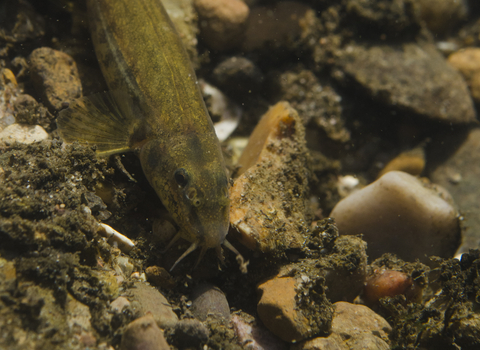
Stone Loach ©Jack Perks
Stone loach
The stone loach is notoriously hard to spot - not only is it mostly nocturnal, it is also well camouflaged and can partially bury itself in the riverbed. It uses its whisker-like barbels to find its prey.
Scientific name
Barbatula barbatulaWhen to see
January to DecemberTop facts
Category
Stats
Length: 6-10cmWeight: 3-6g
Average Lifespan: 3-5 years
Common.
